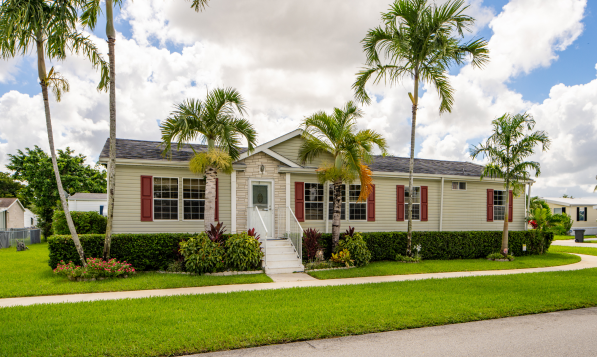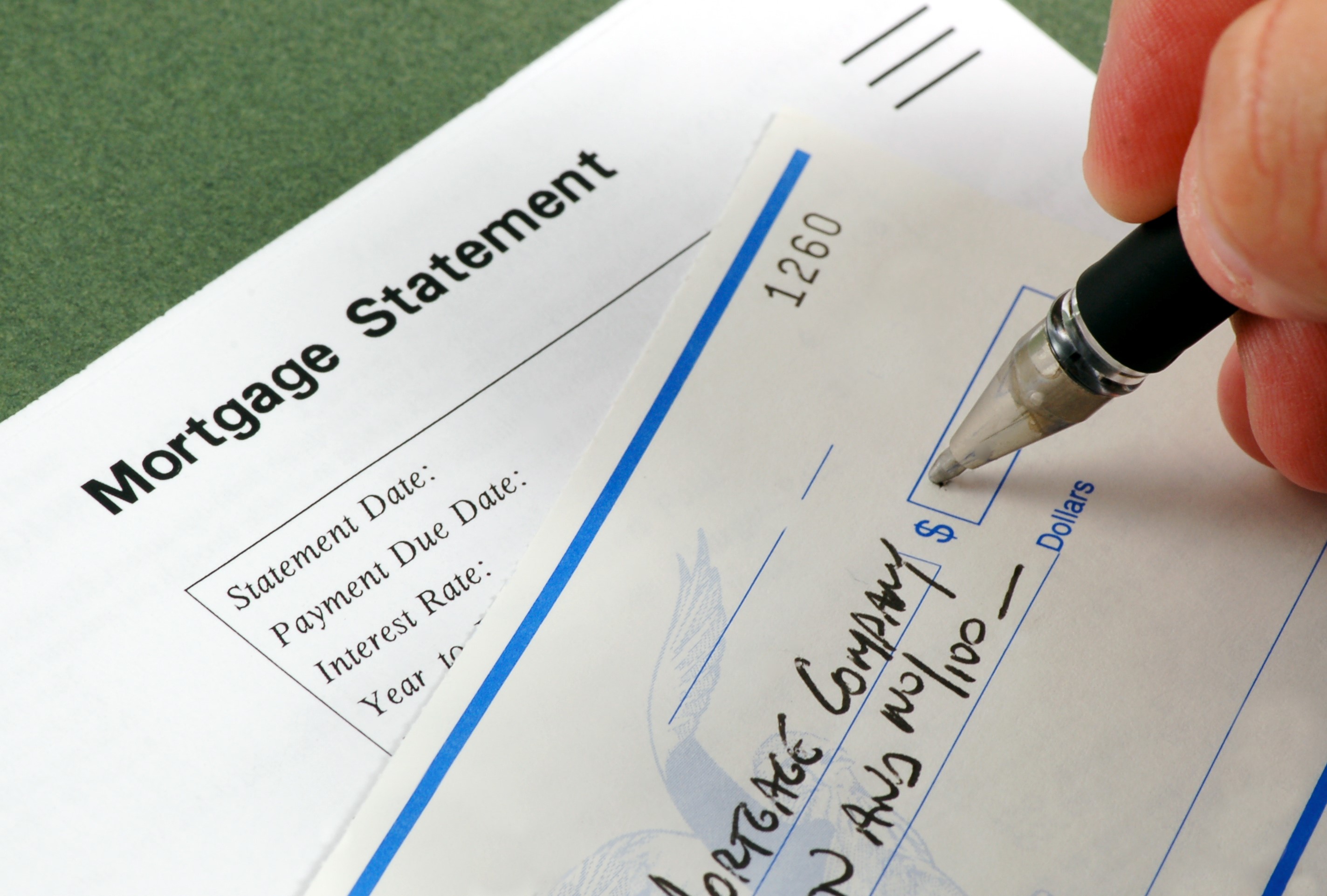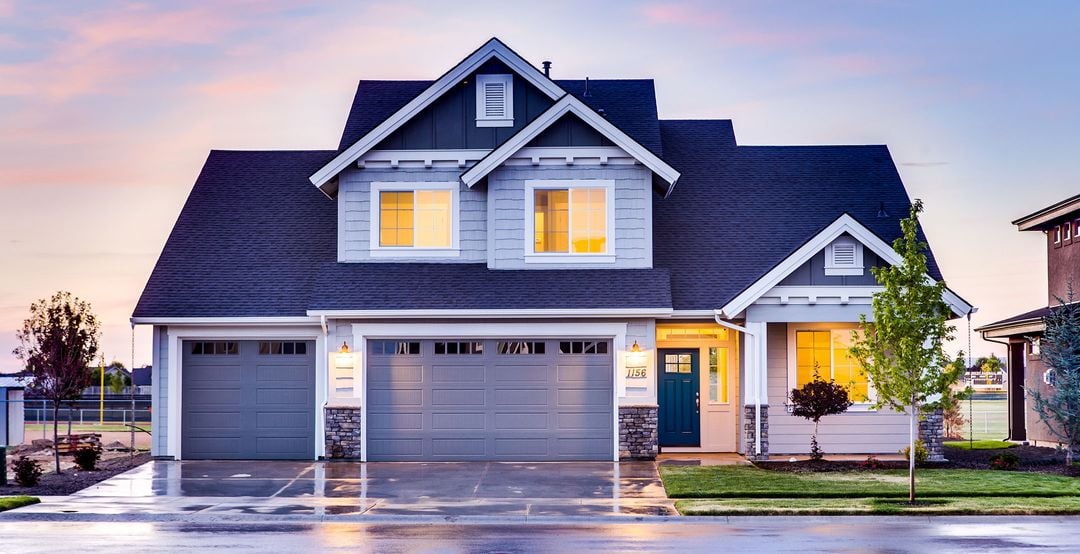Manufactured vs. Modular Homes
When it comes to residential construction, there is a wide range of housing options to suit different needs and preferences. Among these...

Fixed rate mortgages charge a set interest rate that lasts the life of the loan, resulting in reliable monthly payments.
Many borrowers love fixed-rate loans for how dependable they are. A fixed interest rate, regardless of loan program, guarantees a consistent principal and interest payment throughout the life of the loan, which allows for a reliable and gradual amortization. Before accepting any loan, you can input different terms into an amortization calculator to understand when—with consistent monthly payments—you’ll have the loan paid off. Using the same tool, you can also track exactly how much money per month goes toward principal and how much goes toward interest.
The only time the monthly payment on your fixed-rate mortgage may change is for escrow. Property tax rates and insurance premiums adjust regularly (typically every 12 months) and your escrow will adjust in accordance.
Adjustable-rate mortgages (ARMs) begin with a set interest rate, usually below the market rate on a comparable fixed-rate mortgage.
When shopping ARMs, it’s common to see the initial rate and adjustment period represented in a short-hand fraction. For example, a 7/6 ARM will carry a fixed rate the first 7 years of the loan and then adjust every 6 months after.
The amount any rate adjusts will depend on the fully-indexed rate at the time of adjustment, as well as any adjustment caps in place to limit the amount the rate can go up or down. A fully indexed rate is the combination of the index and the fixed margin on the mortgage, both chosen by the lender.
The cap is also set by the lender.You will go over the specific terms of your ARM in detail with your loan officer. It is important to understand the terms in full before accepting the loan. You should not just assume you can refinance later.
HomeReady is a conventional loan product from Fannie Mae designed for creditworthy, low-income borrowers.
Repeat buyers may be eligible, but this product is most often selected by first-time homebuyers. Borrowers using the HomeReady program will pay less credit-related fees and only need a3% down payment. If you have a credit score of at least 620 and as little as 3% available for a down payment, you may qualify for a HomeReady loan. Borrowers with a 680 credit score or greater may qualify for even better terms.
HomeReady is more than just a low down payment option, there is also no required minimum contribution. This means that you are not technically required to use any of your own assets for the down payment. You could pay all 3% in gifts. A “gift” is any funding coming from an outside source without required payback.
Another major advantage of the HomeReady program is the reduced mortgage insurance coverage requirement for loan-to-value ratios above 90%. This means that you can pay the minimum 3% down and still enjoy great pricing on mortgage insurance. HomeReady also permits the use of supplemental boarder or rental income for qualification. All that means is that underwriters can accept part of any leased renter’s rent as qualifying income, which can be a huge advantage in your debt-to-income (DTI) calculation and may help you qualify for more financing.
To qualify for HomeReady, you cannot make more than 80% of your area's median income (AMI). So, if your area—broken down by census tract—has a median yearly income of $100,000, you must make $80,000 or less to qualify for the HomeReady program. Fannie Mae offers a simple tool to look up any area’s median income.
Different than an FHA loan, HomeReady mortgages offer cancellable mortgage insurance, appraisals that can be ordered immediately, zero geographic restrictions on loan amounts, and freedom from certain, sometimes restrictive, underwriting criteria. Note: If all borrowers are first-time homebuyers, then at least one borrower is required to complete homeownership education, regardless of loan-to-value (LTV).
Repeat buyers may be eligible, but Home Possible loans are ideal for first-time homebuyers. Borrowers using the Home Possible program will pay less credit related fees and are only required to provide 3% down at closing. If you have a credit score of at least 660 and as little as 3% available for a down payment, you may qualify for a Home Possible loan.
Home Possible offers a low down payment option with no minimum contribution requirement, meaning you can secure a home without having to use any of your own assets for the down payment. It is possible to pay for it entirely with “gift” money. A gift is any funding coming from an outside source that is given without any required payback.
Another advantage of the Home Possible program is the reduced mortgage insurance coverage requirement for loan-to-value (LTV) ratios above 90%. Home Possible also allows for supplemental boarder or rental income, meaning you may use part of the income from any leased renter to help qualify. This is a huge advantage in your debt-to-income (DTI) calculation and may help you qualify for more financing.
To qualify for Home Possible, you cannot make more than 80% of your area's median income (AMI). What this means is that if your area – broken down by census tract – has a median yearly income of $100,000, you must make $80,000 or less to qualify for the Home Possible program. Freddie Mac offers a simple tool to discover your or any AMI and gauge eligibility.
Different than an FHA loan, HomeReady mortgages offer cancellable mortgage insurance, appraisals that can be ordered immediately, zero geographic restrictions on loan amounts, and freedom from certain restrictive underwriting criteria. Note: If all borrowers are first-time homebuyers, then at least one borrower is required to take homeownership education, regardless of loan-to-value (LTV) percentage.
There are plenty of similarities between the two programs and deciding between the two may come down to your credit score. Home Possible has a minimum credit score requirement of 620, where Home Possible requires at least a 660 credit score. So, if you are between 620 and 659, HomeReady may be the right call. If you are above 660, however, Home Possible might be right for you.
One unit properties include attached and detached single-family homes. Two to four unit properties have one to three extra livable units to rent out.
Manufactured homes are transportable in one or more sections that sits on a permanent foundation.
A real estate project in which each unit owner has title to a unit in a building, an undivided interest in the common areas of the project, and sometimes the exclusive use of certain limited common areas.
A project or subdivision that includes common property that is owned and maintained by a homeowners' association for the benefit and use of the individual PUD unit owners.
Designed to finance luxury properties and homes in high-priced areas, jumbo loans come with unique underwriting requirements and tax implications.
Like other conventional mortgages, these loans are underwritten and insured by private lenders and not backed by any government entity – FHA, VA or USDA. Due to their size, they do not fit the criteria set by the Federal Housing Finance Agency (FHFA) and are not eligible for purchase by Fannie Mae or Freddie Mac.
Since these are non-conforming conventional loans, they’re considered higher-risk. Most lenders underwriting jumbo loans will still use Fannie Mae and Freddie Mac guidelines as a base, but add special overlays. Therefore, applicants regularly face more stringent underwriting. For instance, jumbo loans often require a higher down payment or equity, sometimes as high as 30%, and lenders look for a higher credit score. Finally, you will likely notice a higher interest rate attached to Jumbo loans.

When it comes to residential construction, there is a wide range of housing options to suit different needs and preferences. Among these...

As a first-time home buyer, there can be so many new concepts, options, and terms flying around, it can sometimes feel a bit overwhelming. And...

As a first-time home buyer, there can be so many new concepts, options, and terms flying around, it can sometimes feel a bit overwhelming. And...

T he loan limit in your area depends on a few things, including the loan program you apply for. Each program has its own limit, but most people...

5 min read
Conventional mortgages are not backed by a government program or funding. Instead, they are funded and insured by private lenders. A conventional...

3 min read
When you get a mortgage, you are agreeing to repay a borrowed sum back to a lender over a set number of years. You’re also agreeing to pay a...